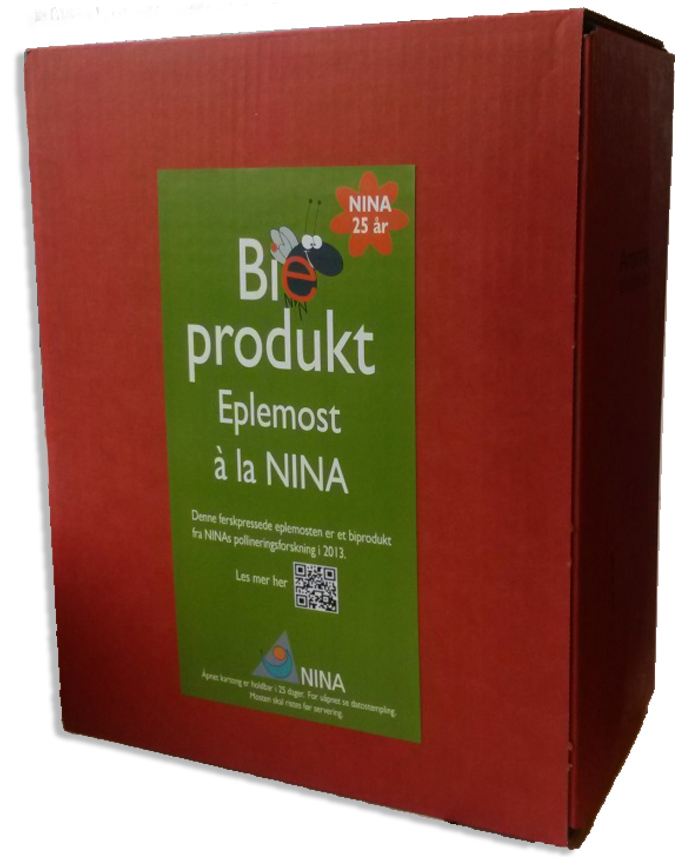We assess the condition of Norwegian ecosystems and their capacity to generate ecosystem services: The relationship between the landscape, pollination and yield.
An important impact of how humans use nature are the effects on the landscape. Because of mechanization and the use of agrochemicals, rural landscapes have undergone considerable changes in the past 50-100 years. A common feature is that larger and homogeneous fields dominate the landscape mosaics and that natural and semi-natural areas have become increasingly fragmented. This phenomenon has been especially evident in developed countries, including Norway, although the Norwegian rural mosaic still conserves qualities of a patchy mosaic. Land use change with resulting landscape simplification is one of the main causes of biodiversity loss, which can negatively affect the benefits that society receives from nature (ecosystem services), such as the pollination of crops from wild pollinators. The consequences of these changes for Norwegian landscapes are not well studied, where landforms have prevented a homogenization on a large scale. We also know little about how pollinators behave in crops that are rich in nectar and pollen, such as fruits and berries, depending on the surrounding landscape.
Two examples of rural landscape mosaics in South-eastern Norway. Green areas: forest, yellow: crop field, pink: grassland, grey: urban area and light green: water.
Wild pollinators fill important biological roles and provide significant economic benefits in the short and longer terms. In the short term, they are responsible for a large part of the pollination of crops and wild flowers, ensuring seed and fruit set. In the longer term, wild pollinators can act as an insurance against unpredictable changes in the climate and the landscape.
Wild pollinators require nesting habitats and access to flowers that produce nectar and pollen as food. The distance between nesting place and food is also important, as flight involves a cost for insects. It is also thought that the amount of nectar and pollen and the length of the period when food is available are important in maintaining populations of wild pollinators.
What are the project's goals?
Our starting point is that the characteristics of the landscape are important for how pollinators function in fruit (apples) orchards and red clover fields. Moreover, the functional properties of pollinators, such as body weight, tongue length, wing size mm, are probably of importance. The same is probably also true about where the fruit orchards and clover fields are distributed in the landscape.

Recording pollinators in an apple orchard.
To answer these questions, we conducted field studies in 2013 and 2014. We studied landscapes with different spatial structure in terms of edge elements such as road and forest verges, and kind of vegetation cover. We have mapped the distribution of pollinators (bumblebees, wild bees and honey bees) and flowers in 26 ‘landscapes’ located in in Vestfold, Østfold, Buskerud and Telemark. Each ‘landscape’ is 2 km in radius and has at its center a field of apple trees or red clover.
We have examined the extent to which the characteristics of the landscape may affect the diversity and numbers of pollinators, and their potential for pollination of flowers and production of fruit and seeds. In addition have we registered practices such as edge mowing, location of honey bee colonies and spraying of agrochemicals), which can affect pollinators.
What have we found out?
We are at the moment analyzing the data set, but preliminary results show that at a small scale, i.e. a crop field verge or roadside, higher diversity and amount of flowers result in higher diversity and amount of wild pollinators. At the same time, the composition of the landscape is also important. Diverse landscapes increase bumblebee densities and linear elements such as road and crop field verges have a positive effect on bumble diversity. However, the total area of forest and flower-poor vegetation cause a decline in the number of bumblebees.

By-product of the pollination project is “NINA Bie-Product”, the exquisite apple juice produced from the apples that were harvested to assess yields.
Read about NINAs other research on pollination.